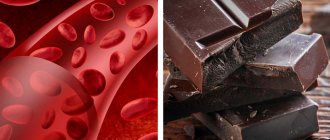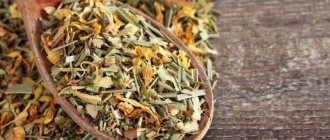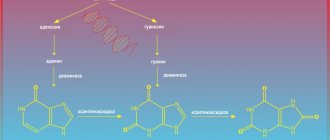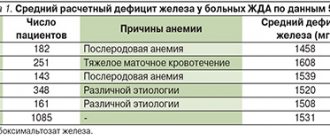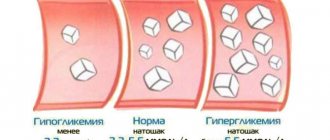Hemoglobin is a special blood protein found in red blood cells. Performs a vital function. Thanks to it, cells and tissues are saturated with oxygen, and gases and substances are exchanged in the body. Therefore, the importance of hemoglobin cannot be overestimated. If its level drops, health problems occur. This could be due to various reasons. So it is necessary to maintain a normal protein level and know ways to restore it.
Symptoms and causes of low hemoglobin
Insufficient hemoglobin content in the blood provokes frequent fatigue, malaise, drowsiness, loss of strength, and bad mood. Patients also complain of constant headache and dizziness. In addition, there is pallor of the skin, poor appetite, tinnitus, cold hands and feet, perversion of taste, pain in the muscles, and the frequent development of colds and viral infections.
In severe cases, the person may lose consciousness. Therefore, in this case, you should definitely visit a doctor and undergo the necessary tests.
Nothing happens for nothing. Including hemoglobin, it cannot decrease without reason. This deficiency in the body is indicated by serious diseases and certain conditions:
- Iron deficiency anemia in chronic form.
- Various bleeding.
- Long-term gastritis.
- Inflammatory bowel pathologies, dysbiosis.
- Time period after surgery.
- Oncology of blood cells.
- Neoplasms in the digestive tract.
- Hepatitis.
- Tuberculosis, pneumonia.
- Iron deficiency.
- Vitamin B12 and folic acid deficiency.
- Destruction of the structure of red blood cells due to severe pathologies.
- Following a diet that involves limiting a large amount of food.
The reasons for a decrease in hemoglobin can be various conditions. However, the greatest impact on protein deficiency is exerted by various blood losses due to surgery, trauma, wounds, and hemorrhoids.
In females, a decrease in hemoglobin most often occurs during menstruation, which lasts more than 5 days.
Features of the diet for certain groups of people
Children, adolescents, and women of reproductive age, especially during pregnancy, are at greatest risk for iron deficiency. This is due to the fact that their consumption does not correspond to the body’s high need for it.
In addition, it is generally believed that vegetarians and vegans are more prone to iron deficiency. But interestingly, studies have shown that vegetarian and vegan diets contain as much iron, if not more, than meat-containing diets.
However, although vegetarians may consume the same amount of iron as non-vegetarians, the review found that they are still at greater risk of deficiency.
This is because they consume mostly non-heme iron, which is not absorbed as well as the heme form in animal foods.
Vegetarians are generally advised to increase their recommended iron intake by 1.8 times to compensate for decreased absorption.
Study
: Review on iron and its importance for human health, EPIC-Oxford: lifestyle characteristics and nutrient intakes in a cohort of 33,883 meat-eaters and 31,546 non-meat-eaters in the UK, Bioavailability of iron, zinc, and other trace minerals from vegetarian diets
According to WHO estimates, in developing countries, every second pregnant woman suffers from anemia, since her iron consumption increases along with the growth of the fetus.
Iron is excreted from a woman’s body in the amount of 2-3 mg per day through the intestines, bile, urine, through the exfoliating epithelium of the skin, during lactation and menstruation.
During pregnancy, the need for iron steadily increases in the first trimester by 1 mg per day, in the second trimester - by 2 mg per day, in the third trimester - by 3-5 mg per day. To produce additional iron, 300 - 540 mg of this element is used. Of these, 250 - 300 mg of iron is spent on the needs of the fetus, 50 - 100 mg on the construction of the placenta, 50 mg of iron is deposited in the myometrium.
Iron loss is most pronounced in 16-20 weeks of pregnancy, which coincides with the period when the process of hematopoiesis begins in the fetus and the increase in blood mass in the pregnant woman.
In the third stage of labor (with physiological blood loss), 200 to 700 mg of iron is lost. Later, during lactation, another 200 mg.
Thus, about 800 - 950 mg of iron is consumed from the maternal depot during pregnancy and the postpartum period.
The body is able to restore iron reserves within 4-5 years.
What is the norm for hemoglobin
As is already known, the protein is found in red blood cells and is responsible for the transport of oxygen in the body.
To maintain a normal level of health, eliminate fatigue, malaise and other characteristic signs of low hemoglobin, it is recommended to regularly take a blood test to determine protein.
The hemoglobin level is different for everyone, depending on age, gender and physiological characteristics of the body. So, for men this figure is 125-160 g/l, for women 115-140 g/l. In newborn babies, the protein level is in the range of 140-195 g/l; for children one year of age, hemoglobin is 110 g/l. And at school age, the blood protein level is at least 150 g/l.
In women, during pregnancy, hemoglobin drops and this is considered normal. At this time its value is about 110 g/l.
As a rule, a low rate is associated with iron deficiency anemia, which occurs in most people, regardless of age and gender.
How to reduce hemoglobin in the blood?
If what causes hemoglobin to rise has nothing to do with serious illnesses, then you can influence it with a specific diet or medications. Among the pharmaceutical medications that can be easily purchased at the pharmacy, there are those that are aimed at thinning the blood: Trental, Cardiomagnyl, Curantil, Aspirin. Only a doctor should prescribe them! To reduce hemoglobin at home, you need to adjust your diet:
- Drink plenty of fluids per day. To do this you need to drink warm water. If you cannot do this, then saline drips are used.
- Reduce fats, sweets, eggs, as they increase cholesterol and so in a viscous environment.
- You should not take multivitamins or products that contain copper and iron.
- It is better to choose shrimp, fish, white meat, nuts, legumes, and vegetables.
- Also limit your intake of foods that increase hemoglobin. This is food enriched with protein and iron - red meat, red fruits and vegetables, offal, fish roe, butter, buckwheat, sweets.
Now you know why increased hemoglobin appears in a woman .
Advantages and disadvantages
| pros | Minuses |
|
|
Authorized Products
A diet for high hemoglobin includes the following in the diet:
- Dietary poultry (turkey, chicken) and rabbit, mainly boiled/baked.
- Vegetable soups with the addition of a small amount of cereals/vegetables.
- Vegetable oils (sesame, linseed, olive, mustard, rapeseed, nut) cold pressed.
- Rye bread and containing bran, flax seed, sesame.
- Fermented milk products with low fat content. Sour cream/cream may be added in small quantities to prepared dishes.
- Chicken eggs, hard-boiled/soft-boiled.
- Porridge (oatmeal, wheat, corn, pearl barley), cooked in water, brown rice.
- Vegetables/fruits containing little vitamin C (tomatoes, red peppers, cucumbers, grapes, cherries, raspberries, strawberries) and vegetables containing salicylates (beets, onions, garlic, gooseberries, cranberries, cherries, apples, prunes). Potatoes in skin and baked.
- Herbal teas (hazel leaves, licorice, sweet clover, hawthorn, sage), ginger tea, coffee, black/green tea, still water.
Table of permitted products
| Proteins, g | Fats, g | Carbohydrates, g | Calories, kcal | |
Vegetables and greens | ||||
| eggplant | 1,2 | 0,1 | 4,5 | 24 |
| zucchini | 0,6 | 0,3 | 4,6 | 24 |
| bulb onions | 1,4 | 0,0 | 10,4 | 41 |
| carrot | 1,3 | 0,1 | 6,9 | 32 |
| cucumbers | 0,8 | 0,1 | 2,8 | 15 |
| squash | 0,6 | 0,1 | 4,3 | 19 |
| salad pepper | 1,3 | 0,0 | 5,3 | 27 |
| beet | 1,5 | 0,1 | 8,8 | 40 |
| tomatoes | 0,6 | 0,2 | 4,2 | 20 |
| Jerusalem artichoke | 2,1 | 0,1 | 12,8 | 61 |
| pumpkin | 1,3 | 0,3 | 7,7 | 28 |
| garlic | 6,5 | 0,5 | 29,9 | 143 |
Fruits | ||||
| pears | 0,4 | 0,3 | 10,9 | 42 |
| melon | 0,6 | 0,3 | 7,4 | 33 |
| kiwi | 1,0 | 0,6 | 10,3 | 48 |
| nectarine | 0,9 | 0,2 | 11,8 | 48 |
| peaches | 0,9 | 0,1 | 11,3 | 46 |
| apples | 0,4 | 0,4 | 9,8 | 47 |
Berries | ||||
| grape | 0,6 | 0,2 | 16,8 | 65 |
| gooseberry | 0,7 | 0,2 | 12,0 | 43 |
Nuts and dried fruits | ||||
| sesame | 19,4 | 48,7 | 12,2 | 565 |
| flax seeds | 18,3 | 42,2 | 28,9 | 534 |
| fenugreek seeds | 23,0 | 6,4 | 58,3 | 323 |
| sunflower seeds | 20,7 | 52,9 | 3,4 | 578 |
| prunes | 2,3 | 0,7 | 57,5 | 231 |
Cereals and porridges | ||||
| oat groats | 12,3 | 6,1 | 59,5 | 342 |
| cereals | 11,9 | 7,2 | 69,3 | 366 |
| millet cereal | 11,5 | 3,3 | 69,3 | 348 |
| barley grits | 10,4 | 1,3 | 66,3 | 324 |
Chocolate | ||||
| chocolate | 5,4 | 35,3 | 56,5 | 544 |
Raw materials and seasonings | ||||
| honey | 0,8 | 0,0 | 81,5 | 329 |
Dairy | ||||
| skim milk | 2,0 | 0,1 | 4,8 | 31 |
| natural yogurt 2% | 4,3 | 2,0 | 6,2 | 60 |
Cheeses and cottage cheese | ||||
| cottage cheese 0.6% (low fat) | 18,0 | 0,6 | 1,8 | 88 |
| curd tofu | 8,1 | 4,2 | 0,6 | 73 |
Meat products | ||||
| beef | 18,9 | 19,4 | 0,0 | 187 |
| rabbit | 21,0 | 8,0 | 0,0 | 156 |
Bird | ||||
| chicken fillet | 23,1 | 1,2 | 0,0 | 110 |
| turkey | 19,2 | 0,7 | 0,0 | 84 |
Fish and seafood | ||||
| fish | 18,5 | 4,9 | 0,0 | 136 |
| squid | 21,2 | 2,8 | 2,0 | 122 |
| seaweed | 0,8 | 5,1 | 0,0 | 49 |
Oils and fats | ||||
| linseed oil | 0,0 | 99,8 | 0,0 | 898 |
| olive oil | 0,0 | 99,8 | 0,0 | 898 |
Non-alcoholic drinks | ||||
| mineral water | 0,0 | 0,0 | 0,0 | — |
| instant coffee dry | 15,0 | 3,5 | 0,0 | 94 |
| green tea | 0,0 | 0,0 | 0,0 | — |
| black tea | 20,0 | 5,1 | 6,9 | 152 |
Juices and compotes | ||||
| Cherry juice | 0,7 | 0,0 | 10,2 | 47 |
| grapefruit juice | 0,9 | 0,2 | 6,5 | 30 |
| strawberry juice | 0,0 | 0,0 | 10,0 | 41 |
| cranberry juice | 0,4 | 0,3 | 11,0 | 46 |
| raspberry juice | 0,8 | 0,0 | 24,7 | 100 |
| * data is per 100 g of product | ||||
Foods that impair iron absorption
Interestingly, the foods you eat affect not only the amount of iron you consume, but also how well it is absorbed into your body.
Study
: Review on iron and its importance for human health
- Products containing phytate
Phytates, or phytic acid, are found in foods such as whole grains, cereals, soy, nuts and legumes.
Even small amounts of phytate can significantly reduce iron absorption.
In one study, just 2 mg of dietary phytate inhibited iron absorption by 18% when added to wheat buns. And when 250 mg of phytate was eaten, up to 82% was not absorbed.
Study
: Iron bioavailability and dietary reference values
However, the negative effects of phytate can be counteracted by consuming foods that improve the absorption of non-heme iron, such as vitamin C.
- Calcium rich foods
Calcium
– an important mineral for bone health.
However, some evidence suggests that it interferes with iron absorption, whether the source is a dairy product or a calcium supplement.
Studies have shown that 165 mg of calcium from milk, cheese or dietary supplements reduces iron absorption by approximately 50–60%.
We recommend
“Nutrition against acne: myths, tips and menus” Read more
This is concerning because increased calcium intake is typically recommended for children and women, the same populations that are at risk for iron deficiency.
However, most studies were short-term and were conducted with a single meal. A thorough review of long-term studies found that calcium and dairy products do not adversely affect absorption.
Study
: Calcium and iron absorption—mechanisms and public health relevance, Calcium: effect of different amounts on nonheme- and heme-iron absorption in humans
Calcium and iron supplements should be taken at different times of the day if possible.
- Products containing polyphenols
Polyphenols are found in varying amounts in plant foods and drinks, including vegetables, fruits, some grains and legumes, tea, coffee and wine.
Coffee and tea, which are widely consumed with meals, are high in polyphenols and have been shown to inhibit the absorption of non-heme iron.
In one review, drinking a cup of black tea with a meal reduced iron absorption by 60–70%, regardless of whether the tea was weak, normal, or strong.
However, when participants drank tea between meals, the reduction in absorption was only about 20%.
To counteract the negative effects of polyphenols, be sure to leave a couple of hours between your iron-rich meal and your afternoon tea or coffee.
Study
: Effect of tea and other dietary factors on iron absorption
While not all dietary iron is absorbed equally, certain foods can improve your body's ability to absorb it.
Fully or partially limited products
A diet for high hemoglobin includes excluding/limiting the use of:
- Meat/fish broths, fried foods, saturated fats (pork, lamb, beef, cooking fats).
- Fatty meats of domestic waterfowl (duck, goose), sausages, smoked meats;
- Fatty dairy/fermented milk products (butter, cottage cheese, sour cream, cheese, cream).
- White fresh bread and bakery products.
- Sugar, sweet pastries, cream cakes, puff pastry products, cakes.
- Legumes of all types.
- Offal - liver (beef/pork), kidney, brain.
- Various types of cabbage, radishes, watercress, turnips, radishes.
- Garden herbs (parsley, dill, basil, coriander).
- Light grape and pomegranate juice.
Table of prohibited products
| Proteins, g | Fats, g | Carbohydrates, g | Calories, kcal | |
Vegetables and greens | ||||
| greenery | 2,6 | 0,4 | 5,2 | 36 |
| beans | 6,0 | 0,1 | 8,5 | 57 |
| cabbage | 1,8 | 0,1 | 4,7 | 27 |
| broccoli | 3,0 | 0,4 | 5,2 | 28 |
| boiled cauliflower | 1,8 | 0,3 | 4,0 | 29 |
| parsley | 3,7 | 0,4 | 7,6 | 47 |
| radish | 1,2 | 0,1 | 3,4 | 19 |
| white radish | 1,4 | 0,0 | 4,1 | 21 |
| red radish | 1,2 | 0,1 | 3,4 | 20 |
| black radish | 1,9 | 0,2 | 6,7 | 35 |
| salad | 1,2 | 0,3 | 1,3 | 12 |
| celery | 0,9 | 0,1 | 2,1 | 12 |
| soybeans | 34,9 | 17,3 | 17,3 | 381 |
| asparagus | 1,9 | 0,1 | 3,1 | 20 |
| dill | 2,5 | 0,5 | 6,3 | 38 |
| beans | 7,8 | 0,5 | 21,5 | 123 |
| lentils | 24,0 | 1,5 | 42,7 | 284 |
| spinach | 2,9 | 0,3 | 2,0 | 22 |
| sorrel | 1,5 | 0,3 | 2,9 | 19 |
Fruits | ||||
| avocado | 2,0 | 20,0 | 7,4 | 208 |
| oranges | 0,9 | 0,2 | 8,1 | 36 |
| bananas | 1,5 | 0,2 | 21,8 | 95 |
| pomegranate | 0,9 | 0,0 | 13,9 | 52 |
| grapefruit | 0,7 | 0,2 | 6,5 | 29 |
| lemons | 0,9 | 0,1 | 3,0 | 16 |
| mango | 0,5 | 0,3 | 11,5 | 67 |
| tangerines | 0,8 | 0,2 | 7,5 | 33 |
| mulberry | 0,7 | 0,0 | 13,6 | 52 |
Berries | ||||
| cowberry | 0,7 | 0,5 | 9,6 | 43 |
| blueberry | 1,0 | 0,0 | 8,2 | 35 |
| blackberry | 2,0 | 0,0 | 6,4 | 31 |
| viburnum | 0,0 | 0,0 | 7,0 | 26 |
| cranberry | 0,5 | 0,0 | 6,8 | 26 |
| chokeberry | 1,5 | 0,2 | 10,9 | 55 |
Mushrooms | ||||
| mushrooms | 3,5 | 2,0 | 2,5 | 30 |
Cereals and porridges | ||||
| buckwheat (kernel) | 12,6 | 3,3 | 62,1 | 313 |
| semolina | 10,3 | 1,0 | 73,3 | 328 |
| white rice | 6,7 | 0,7 | 78,9 | 344 |
Flour and pasta | ||||
| pasta | 10,4 | 1,1 | 69,7 | 337 |
Confectionery | ||||
| jam | 0,3 | 0,2 | 63,0 | 263 |
| jam | 0,3 | 0,1 | 56,0 | 238 |
| candies | 4,3 | 19,8 | 67,5 | 453 |
| pastry cream | 0,2 | 26,0 | 16,5 | 300 |
| cookie | 7,5 | 11,8 | 74,9 | 417 |
Ice cream | ||||
| ice cream | 3,7 | 6,9 | 22,1 | 189 |
Cakes | ||||
| cake | 4,4 | 23,4 | 45,2 | 407 |
Raw materials and seasonings | ||||
| mustard | 5,7 | 6,4 | 22,0 | 162 |
| mayonnaise | 2,4 | 67,0 | 3,9 | 627 |
Dairy | ||||
| milk 3.6% | 2,8 | 3,6 | 4,7 | 62 |
| milk 4.5% | 3,1 | 4,5 | 4,7 | 72 |
| cream | 2,8 | 20,0 | 3,7 | 205 |
| sour cream 25% (classic) | 2,6 | 25,0 | 2,5 | 248 |
Cheeses and cottage cheese | ||||
| cheese | 24,1 | 29,5 | 0,3 | 363 |
| cottage cheese 11% | 16,0 | 11,0 | 1,0 | 170 |
| cottage cheese 18% (fat) | 14,0 | 18,0 | 2,8 | 232 |
Meat products | ||||
| pork | 16,0 | 21,6 | 0,0 | 259 |
| pork liver | 18,8 | 3,6 | 0,0 | 108 |
| pork kidneys | 13,0 | 3,1 | 0,0 | 80 |
| pork fat | 1,4 | 92,8 | 0,0 | 841 |
| salo | 2,4 | 89,0 | 0,0 | 797 |
| beef liver | 17,4 | 3,1 | 0,0 | 98 |
| beef kidneys | 12,5 | 1,8 | 0,0 | 66 |
| beef brains | 9,5 | 9,5 | 0,0 | 124 |
Sausages | ||||
| smoked sausage | 16,2 | 44,6 | 0,0 | 466 |
| smoked sausage | 9,9 | 63,2 | 0,3 | 608 |
| sausages | 10,1 | 31,6 | 1,9 | 332 |
| sausages | 12,3 | 25,3 | 0,0 | 277 |
Bird | ||||
| smoked chicken | 27,5 | 8,2 | 0,0 | 184 |
| duck | 16,5 | 61,2 | 0,0 | 346 |
| smoked duck | 19,0 | 28,4 | 0,0 | 337 |
| goose | 16,1 | 33,3 | 0,0 | 364 |
Fish and seafood | ||||
| smoked fish | 26,8 | 9,9 | 0,0 | 196 |
| salted fish | 19,2 | 2,0 | 0,0 | 190 |
| Red caviar | 32,0 | 15,0 | 0,0 | 263 |
| black caviar | 28,0 | 9,7 | 0,0 | 203 |
| mussels | 9,1 | 1,5 | 0,0 | 50 |
| canned fish | 17,5 | 2,0 | 0,0 | 88 |
Oils and fats | ||||
| butter | 0,5 | 82,5 | 0,8 | 748 |
| animal fat | 0,0 | 99,7 | 0,0 | 897 |
| cooking fat | 0,0 | 99,7 | 0,0 | 897 |
| * data is per 100 g of product | ||||

